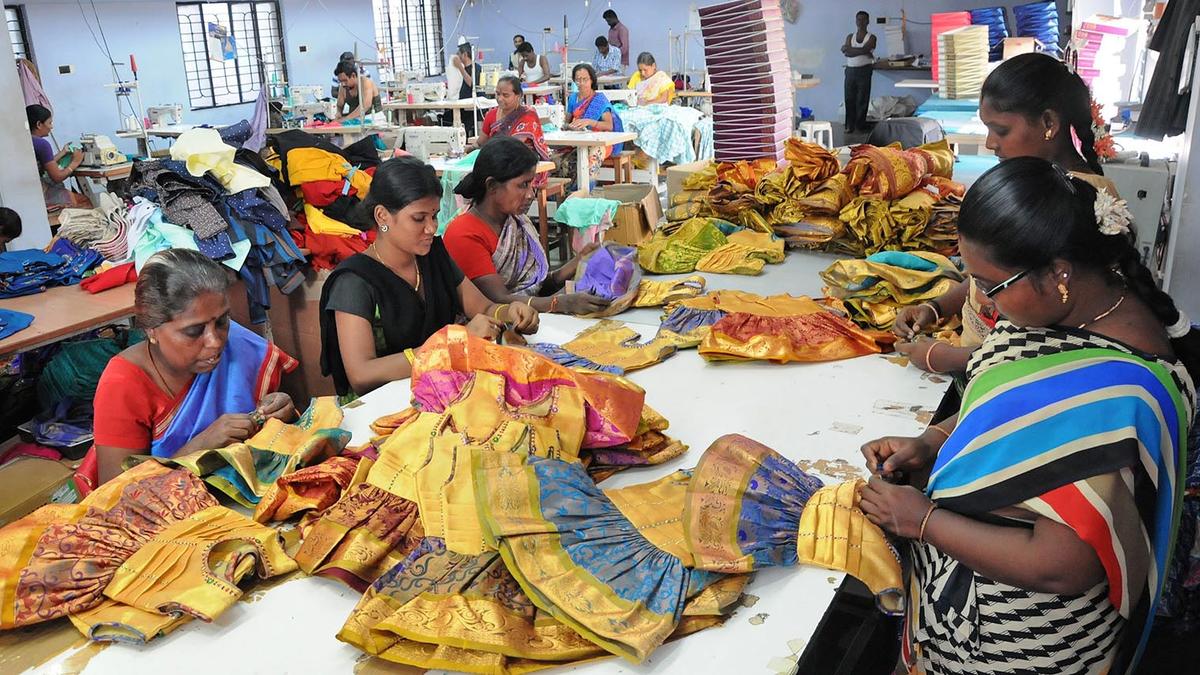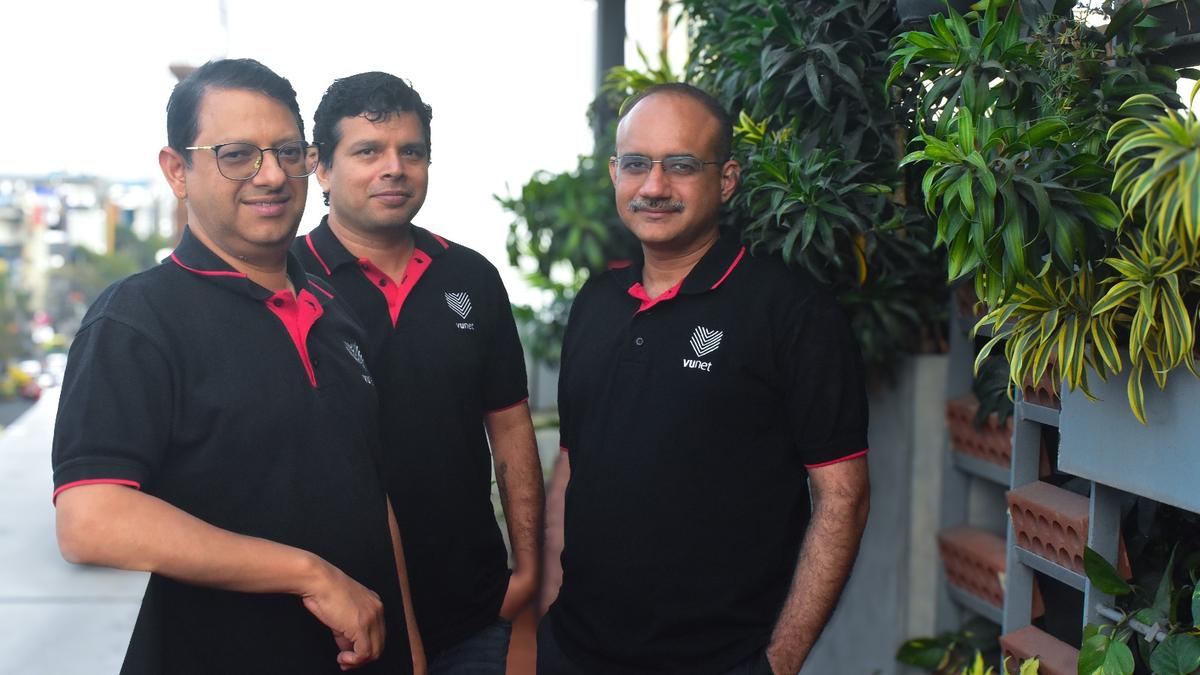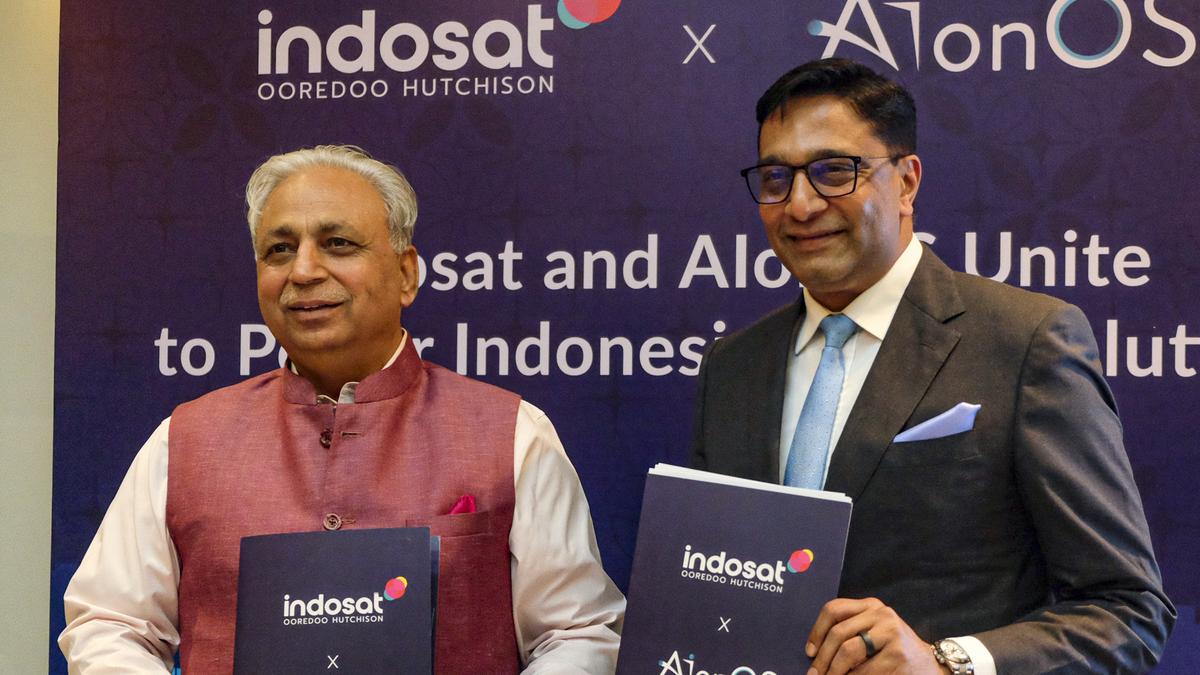Women work at a garment unit in Madurai.
| Photo Credit: G. Moorthy
Assuming a conservative GDP growth rate of 10.1% for FY26, the Budget accords priority for fiscal consolidation. The ‘cautious’ GDP forecast appears to be realistic for tax revenue projections, given the uncertainties in the global economy and growth slowdown in the domestic economy.
Importantly, even with these moderate growth expectations, the government has shown resolution in lowering the fiscal deficit. There are two implications of this. First, there exists a possibility of pegging the fiscal deficit to below 4% in the medium term; and second, there is no room for concerns on liquidity in the financial system as an expanded borrowing programme would have caused disturbances in the market.
Given this fiscal path, the gross borrowings would be ₹14.8 trillion against ₹14 trillion in FY25. As the liquidity is under pressure currently, a higher level of borrowing could have caused disruptions in the market impacting investments. Given this macro fiscal stance, the Budget attempts to revive growth by stimulating aggregate demand in the economy, with a crucial role assigned to the industrial sector.
There are three aspects to note about the industrial sector. First, industrial growth, especially that of manufacturing, exhibits frequent fluctuations with sectoral and spatial growth differences often dampening employment creation and GDP growth. Second, despite numerous incentives, export growth has been sluggish, with low productivity growth, competitiveness, and research and development activity. Third, private investments are not keeping pace with governments efforts to encourage them through incentives and concessions.
Boosting industrial growth
Two broad sets of measures can be deciphered to boost industrial growth: (a) economy-wide measures to tackle supply bottlenecks and bolster demand and (b) sector-specific policies to enhance output and exports. In the first set, there has been a continued focus on capital expenditure (capex), which is targeted to be ₹11.2 lakh crore, higher than the revised numbers for FY25. The focus remains on roads, railways, and defence, which is expected to generate multiplier effects in the economy. Further, to step up investments, various measures have been announced across ministries focusing on fostering public-private partnership deals along with States. There is also an emphasis on investment in urban infrastructure with funding supported by issuance of bonds.
In terms of stimulating demand, the government has attempted to tackle consumption through changes in income tax rates and has given major concessions for individuals. Complementing this is the focus on social welfare and development through programmes such as PM KISAN, MGNREGA, and PM Awas Yojana. A combination of tax relief and welfare provisioning along with continued capex is expected to generate higher demand and fuel industrial growth.
Regarding targeted measures for the manufacturing sector, the emphasis has been on three areas: employment and skills, MSMEs, and export promotion. The focus on manufacturing of electronics, toys, and footwear is important, as these are one of the biggest export baskets of China to the U.S. With the U.S. imposing more tariffs on China, it is prudent to focus on domestic production. The emphasis on leather products and production of toys by developing clusters and a manufacturing ecosystem is expected to generate employment in the industrial sector. Four initiatives have been announced for export promotion: an export promotion mission to be driven jointly by the Ministries of Commerce, MSME, and Finance; the BharatTradeNet a digital public infrastructure; a national framework to be formulated as guidance to States for promoting Global Capability Centres in emerging Tier 2 cities; and warehousing facility for air cargo to facilitate the upgradation of infrastructure. For MSMEs, the loan limit under the Modified Interest Subvention Scheme will be increased from ₹3 lakh to ₹5 lakh. Further, a new scheme will be launched for five lakh women entrepreneurs from Scheduled Castes and Scheduled Tribes.
Two aspects of the strategy to push industrial growth need careful examination. First, the emphasis on exports might not deliver in an era of global uncertainties and tariff wars. The old mantra of ‘export-led growth’ needs re-examination. Second, earlier models of skilling have not delivered enough. Given the rapid technological changes and changing needs of industry, a new template needs to be evolved. The PLI scheme also requires stocktaking.
Two challenges
The Economic Survey and the Budget say ‘get out of the way’, ‘trust people’, and speak of the need of having a “light touch regulatory framework based on principles and trust”. The intent is to unleash productivity and employment in the manufacturing sector. However, this throws open two challenges: for the government to implement promises and for corporates to utilise the space left by the government getting out. Getting out then has to be in phases, recalibrating the nudges provided through incentives. This requires corporates to assume a larger role by stepping up investments, for which the economy has been waiting.
M. Suresh Babu, Director, Madras Institute of Development Studies. Views are personal
Published – February 02, 2025 01:51 am IST




